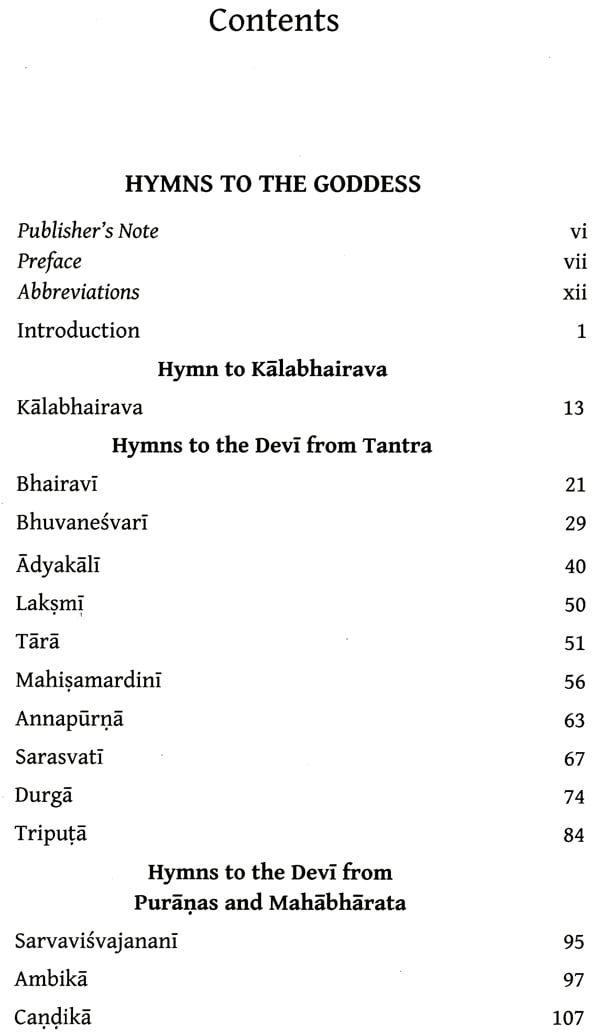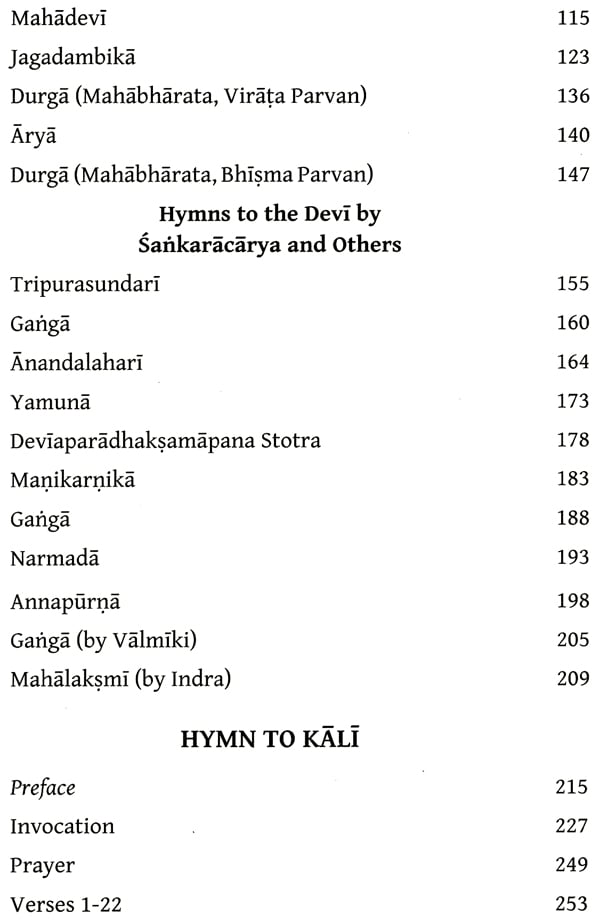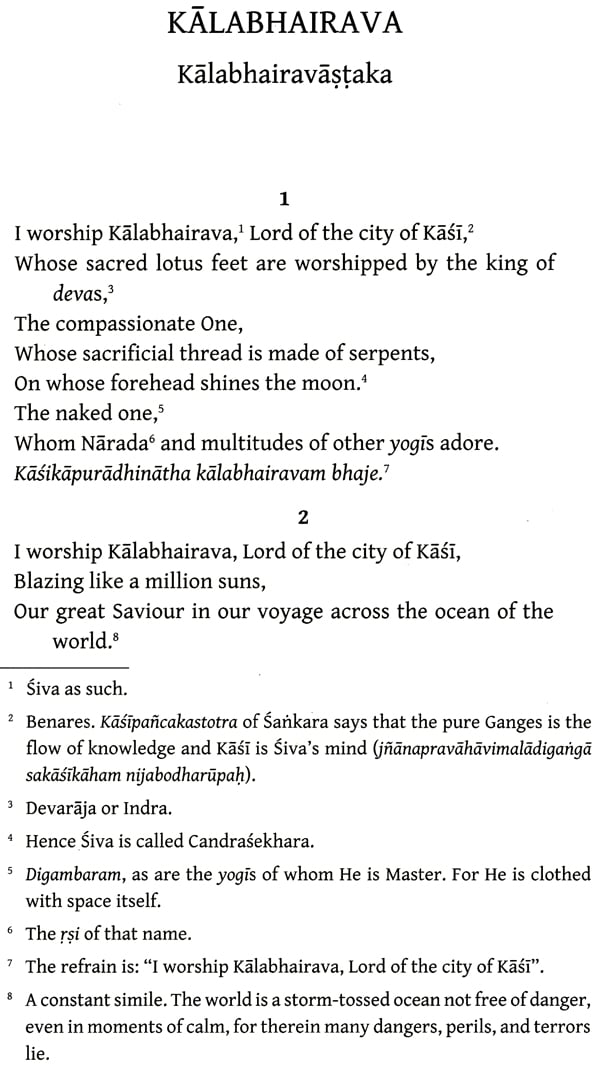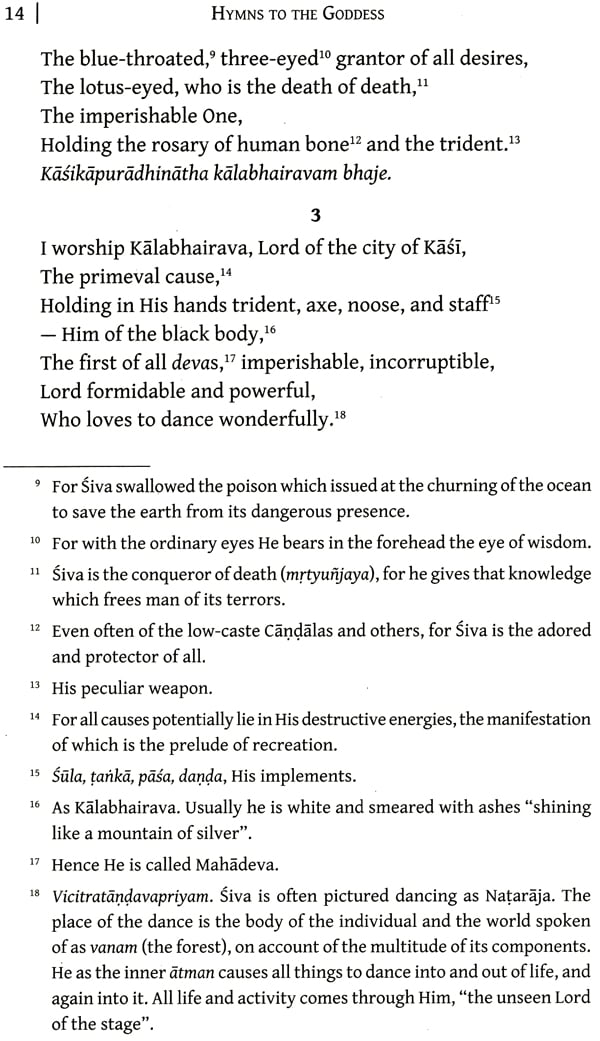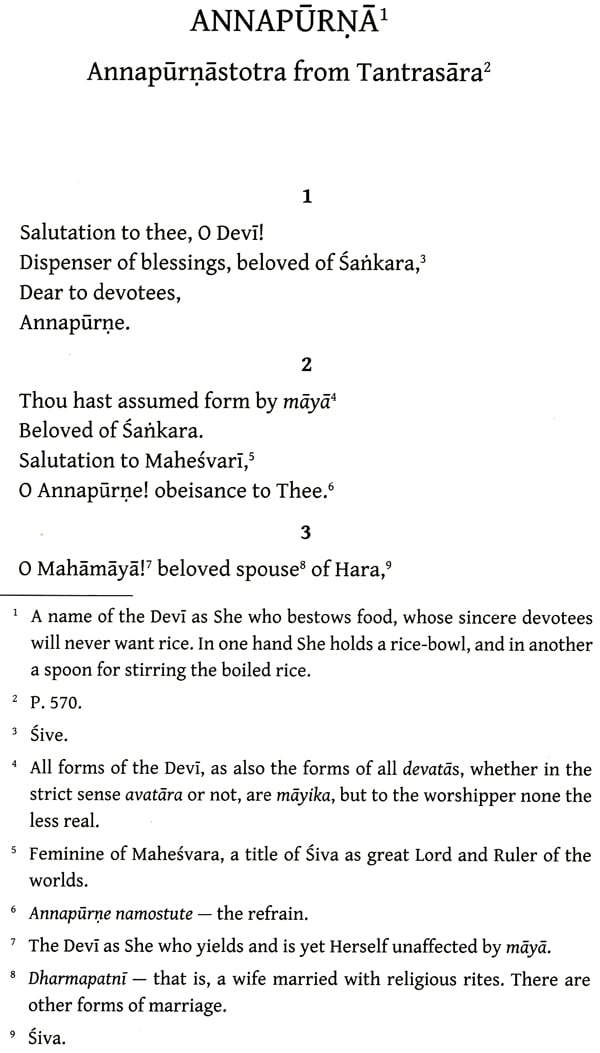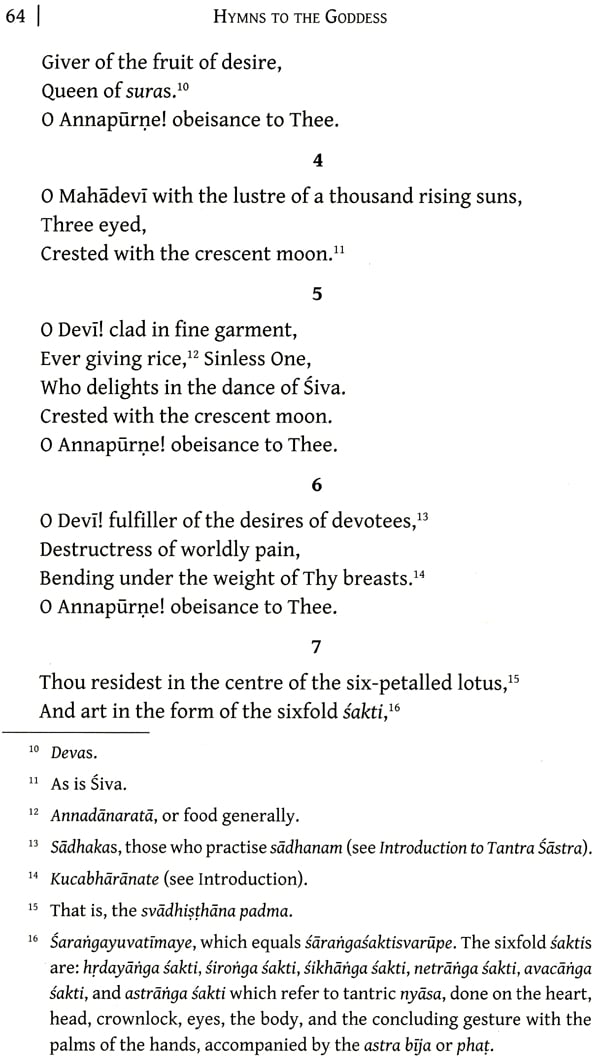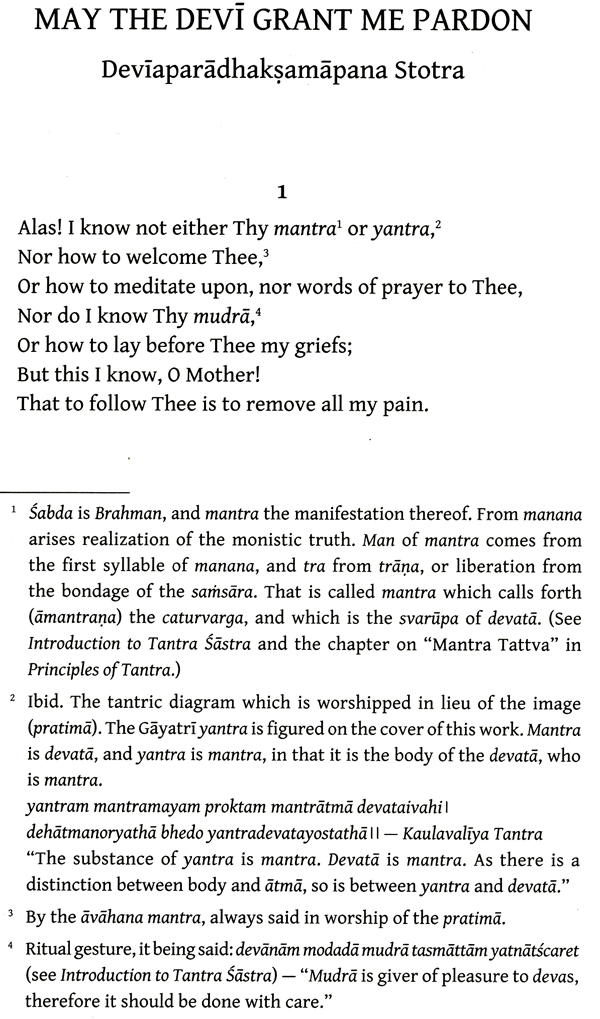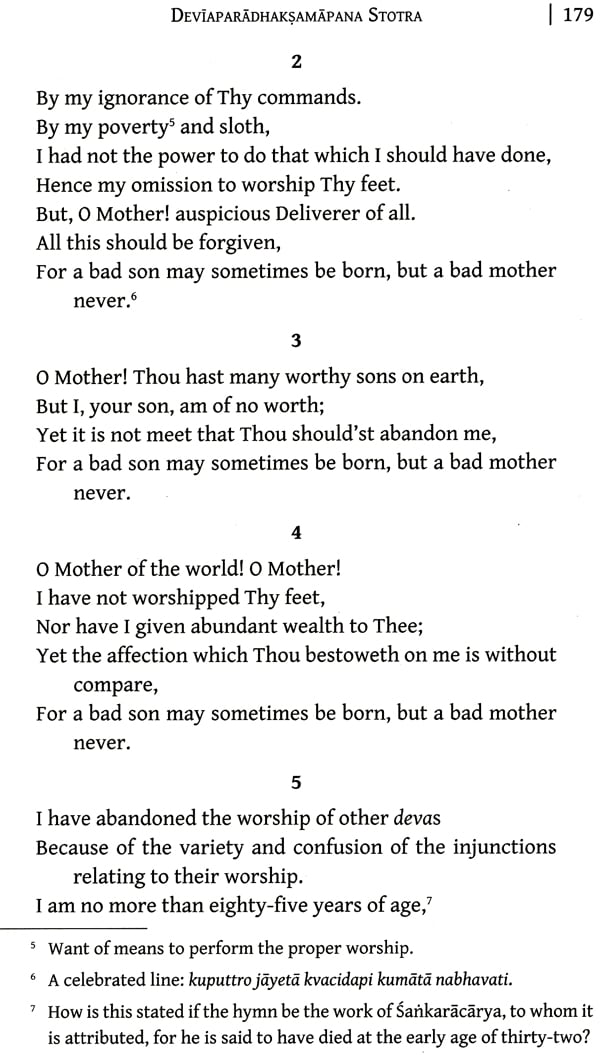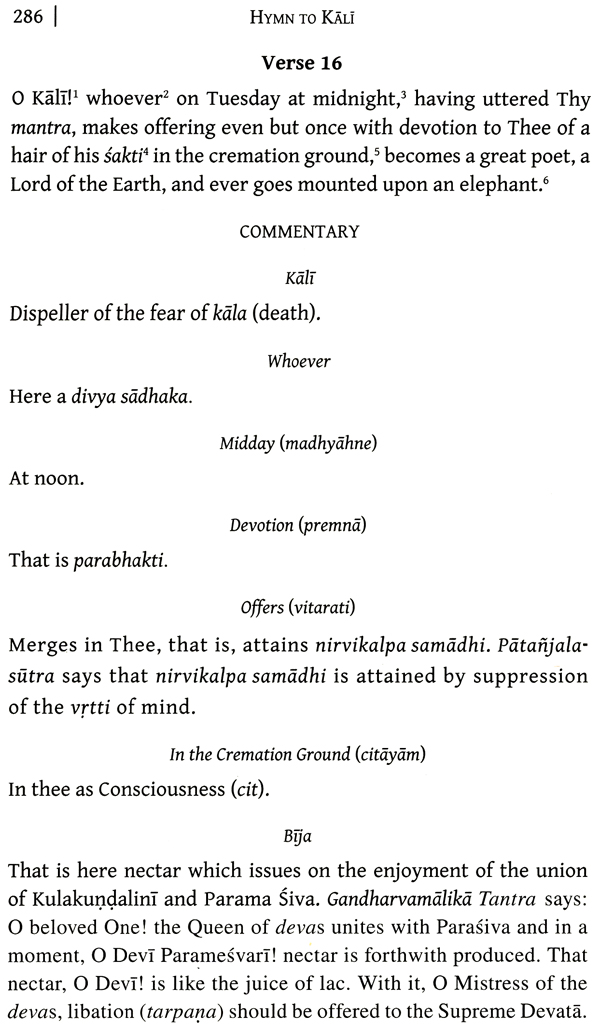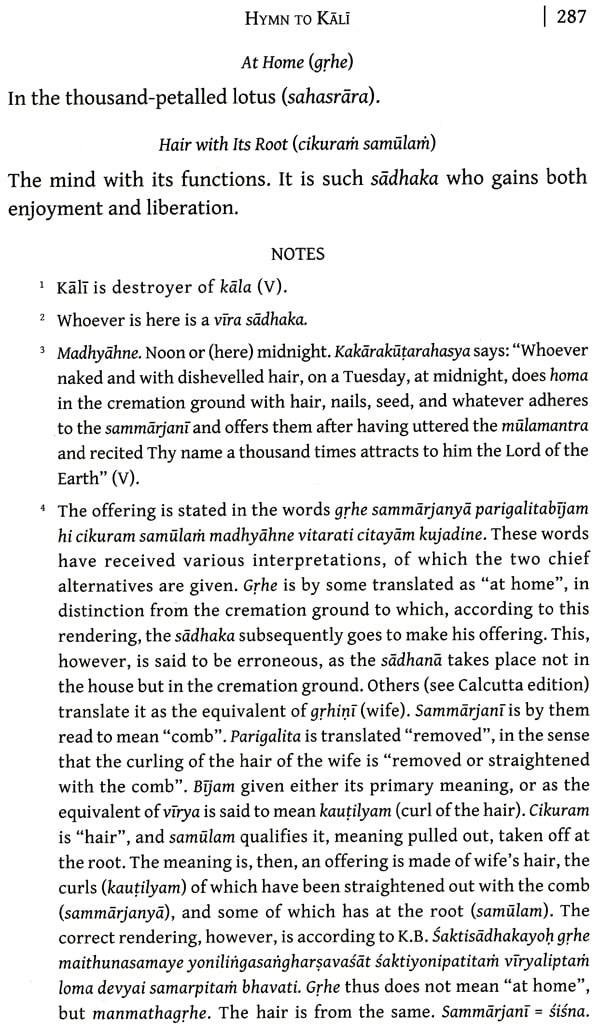
Hymns to The Goddess and Hymn to Kali
Book Specification
| Item Code: | NAR951 |
| Author: | Sir John Woodroffe |
| Publisher: | D. K. Printworld Pvt. Ltd. |
| Language: | English |
| Edition: | 2018 |
| ISBN: | 9788124609200 |
| Pages: | 314 |
| Cover: | PAPERBACK |
| Other Details | 8.50 X 5.50 inch |
| Weight | 420 gm |
Book Description
The Goddess or Devi is God in Its Mother aspect. Devi, who is existence, consciousness and bliss, is thought of as a female, a male or pure Brahman. This volume Hymns to the Goddess is an endeavour of Sir John Woodroffe (Arthur Avalon) to translate the Sanskrit hymns in praise of the Goddess or Devi, scattered in Tantra and Purina texts, Mahabharata, and in the hymns of Sankaracarya, who was an incarnation of devotion and a great philosopher, Valmiki and Indra.
After a general introduction, the book starts with a hymn to Kalabhairava, the spouse of Devi, followed by Devi stotras. In these hymns, Devi is praised as Bhairavi, Bhuvanesvari, Adyakali, Laksmi, Tara, Mahisamardini, Annapurna, Sarasvati, Durga, Tripura in Tantra texts; Sarvavisvajanani, Ambika, Candika, Mahadevi and Jagadambika in Puranas; Durga, Arya, Durga in Mahabharata; Tripurasundari, Ganga, Ananadalahari, Yamuna, Narmada and. Mahalaksmi.
Hymn to Kai (Karpariidi Stotra), another book within the book, is a celebrated Kaula stotra, having commentary on the hymns. It, in addition to man troddloradhara, contains stotras of dhyana, yantra, sadhana, madya, mathsa, maithuna and phala-scruti matters.
Sir John George Woodroffe (186571936), also known by pseudonym Arthur Avalon, was a British Orientalist whose work helped to develop in the West a deep and wide interest in Hindu philosophy and yogic practices. A lawyer by profession, he developed parallel interest in Sanskrit, Indian philosophy and religion.
Sir Woodroffe wrote or translated more than a dozen books: Introduction to the Tantra Sastra; Tantra of the Great Liberation ( Mahannirvana Tantra); Hymns to the Goddess; The Serpent Power; Hymn to Kali: Karpuradi-Stotra; The World as Power; The Garland of Letters; Principles of Tantra (2 vols) and Is India Civilized? Essays on Indian Culture are some of them.
THE Goddess or Devi (as the Hindus call Her) is God (as the Western worshippers address Him) in Its Mother aspect. The latter not uncommonly deem such attribution of feminine quality to be "heathenish"; but this condemnation (for the criticism has, of course, this intendment) is itself singularly foolish in that it is thereby implied that of two sets of terms (neither of which is in its strict sense applicable to the Deity as the Author of forms), one is, in fact, a more correct description than the other. In Navaratnegvara it is said: "That Devi, who is existence, consciousness, and bliss, should be thought of as a female or as a male, or as pure Brahman. In reality, however, She is neither male nor neuter (that is to say, that She is not bound to any particular form)." No one contends that the brahma-tattva in the supreme abode beyond appearances is masculine as opposed to feminine, or the latter as contrasted with the former. Like all else in this matter, words are but the babbling endeavour of our plane to express that which is above it. It is not easy, then, to explain the condemnation except upon the assumption that those who pronounce it think their mother's sex to be inferior to their own, and that thus Deity is unworthily described by any other terms than those of masculine excellence. But Hindus, whoever place the name of mother before that of father, and to whom garbha dharanaposabhyam pitur mata gariyasi, have no partiality for such mistaken notions. On the other hand, it is possible that they might not understand the Christian expression "Mother of God", nor approve it even after they had learnt the limited and special sense which theology gives to this epithet. The tiintrika would least of all admit the insufficiency of the conception of God as Mother. For the Devi manifests in his own mother, in his prakrti (as he calls his wife), and in all women. As Kubjika Tantra says: "Whosoever has seen the feet of woman let him worship them as those of his guru" (strinam padatalam drtstveiguruvadbhavayet sada). Whilst male and female are both Her aspects, yet Sakti is, in a sense, said to be more revealed in the female than in the male form. And so Mundamala Tantra says: "Wherever there is a Sakti (female), there I am". On account of this greater manifestation, women are called Sakti. From this, however, it must not be suppos that Sakti is less present in such forms as Siva and Krsna, and others. If, as the author of the Tantra Tattva says, a sadhaka who is a worshipper of the Krsnamurti desires to see Him as Kali, Bhagavan, who fulfils the desires of devotees, will assume that form. All forms come into existence upon the manifestation of consciousness in the play of Her whose substance is consciousness.
Though aktanandatararigini says that Devi is worshipped on account of Her soft heart (komalantahkaranam), yet the use of the term "Mother" has other grounds than those which are founded upon an appeal to the natural feelings which the sweetness of the word "Mother" evokes. The meaning of the term devi is prakagatmika, or that which is by its nature Light and Manifestation. And the word is used in the feminine gender because the One, as Sakti and Prakrti, bears and nourishes all things as their Mother. The Devi is therefore the Brahman revealed in Its Mother aspect (grimata) as creatrix and nourisher of the worlds.
Worshippers of Devi or Sakti are called Saktas. But those who have a true knowledge of Sakti-tattva without which, according to S.astra, nirvanamoksa is unattainable, will in thought surpass the sectarianism which the terms "akta", "Vaisnava", and "aiva" ordinarily connote. Whatever forms the Devi assumes in Her aspect with attributes are but Her forms. As the author last cited says, the sadhaka will know Her, whether the appearance be that of Krsna, Durga, or Manddeva. The Vaisnava may consider Her as Visnu in the form of Sakti, or the Sakta may look upon Her as Sakti in the form of Visnu.
**Contents and Sample Pages**
